Submissions of 303rd Bomb Group related stories and articles are most welcome.

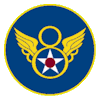

December 28, 2010
Volume II, Issue 18
www.303rdBG.com

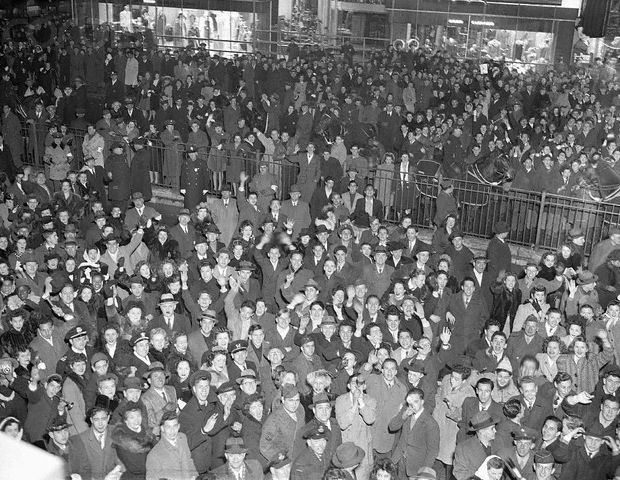
New Year's Eve 1944 at Times Square – "An Experience to Remember"
"Our crew departed Hunter Field, Georgia in a new B-17G for Bangor, Maine on December 24, 1944. We were contacted en route and ordered to land at a base in Trenton, New Jersey due to ice storms over the Atlantic. This unscheduled stop enabled us to spend both Christmas and New Years Eve in the New York City area. New Years Eve at Times Square was an experience to remember. . ." — 2Lt Billy L. Runnels, 360th 2Lt Howard C. Lacker Crew
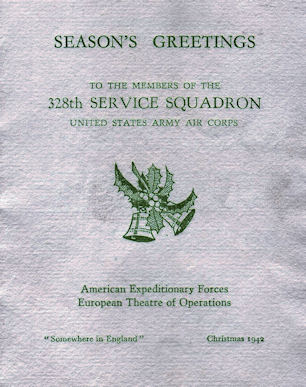
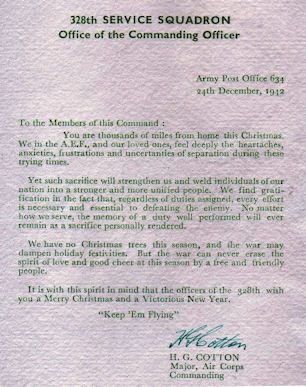
– click for a larger view –
The 1942 Christmas Card above, and the 1945 New Year's message from General Doolittle below, were provided by the family of M/Sgt Joyce H. La Croix. M/Sgt La Croix was a Hangar Crew Chief for the 328th Air Service Squadron and the 444th Sub Depot.
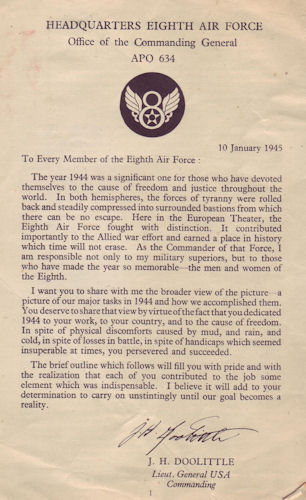
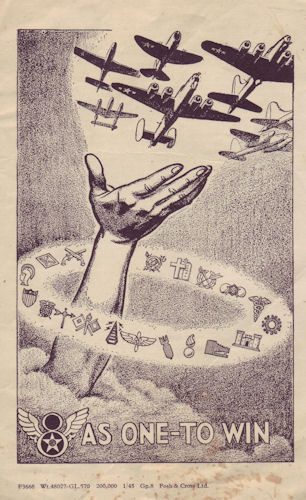
– click for a larger view –
HEADQUARTERS EIGHTH AIR FORCE
Office of the Commanding General
APO 63410 January 1945
To Every Member of the Eighth Air Force :The year 1944 was a significant one tor those who have devoted themselves to the cause of freedom and justice throughout the world. In both hemispheres, the forces of tyranny were rolled back and steadily compressed into surrounded bastions from which there can be no escape. Here in the European Theater, the Eighth Air Force fought with distinction. It contributed importantly to the Allied war effort and earned a place in history which time will not erase. As the Commander of that Force, I am responsible not only to my military superiors, but to those who have made the year so memorable--the men and women of the Eighth. I want you to share with me the broader view of the picture—a picture of our major tasks in 1944 and how we accomplished them. You deserve to share that view by virtue of the fact that you dedicated 1944 to your work, to your country, and to the cause of freedom. In spite of physical discomforts caused by mud, and rain, and cold, in spite of losses in battle, in spite of handicaps which seemed insuperable at times, you persevered and succeeded.
The brief outline which follows will fill you with pride and with the realization that each of you contributed to the job some element which was indispensable. I believe it will add to your determination to carry on unstintingly until our goal becomes a reality.
J. H. DOOLITTLE
Lieut. General USA
Commanding
THE EIGHTH AIR FORCE - 1944
On December 24, 1944, the Eighth Air Force sent over Germany 2,034 heavy bombers and 936 fighters, the greatest single force of airplanes ever dispatched in history. Well over 21,000 Americans flew in that armada over marshalling yards, vital communications centers and airfields behind the enemy lines. Many times that number worked on the ground to launch those planes, and many more again performed the great varieties of services which have built the Eighth into the deadly weapon it was intended to be.
WHAT WE HAVE DONE . . . .
The past year has seen the Eighth Air Force in full stride. We have hit the enemy with more than 430,000 tons of bombs. During the year, our fliers flew 1,700,000 operational hours, and our planes consumed 522,000,000 gallons of gasoline to release those tons of destruction. Blows were directed in turn at the types of targets which were most vital to the Nazi war effort and which could only be destroyed by precision bombing—the job of the Eighth.Out first task was to make sure that when the combined Allied ground forces invaded " Fortress Europe ", we would have superiority in the air. Our bombers and fighters, hand in hand with those of the RAF, and the Ninth, Twelfth and Fifteenth American Air Forces, pounded German air power in the early months of the year, and the Luftwaffe was virtually helpless during the initial phases of the invasion. Aircraft factories, oil plants and supplies, and transportation facilities—these targets showed the effects of our pre-invasion hammering when D-Day came.
Our second great mission was performed during the invasion phase. Although designed for strategic bombing, the Eighth carried through every task of tactical support of the ground forces called for by the Supreme Commander. We helped to cover the Normandy beaches, and later the Dutch airborne landings, with protective air umbrellas. On June 6th, we flew a record-breaking 4,700 sorties. We sealed off the bridgeheads from enemy reserves by cutting the Seine and Loire bridges, and by hammering Nazi communications. Precision bombing blazed the way for the ground forces through enemy strong points. Before D-Day we flew thousands of tons of munitions and equipment to resistance movements on the continent ; rushed emergency shipments of food, medical and other vital supplies to ground forces during the crucial month of August ; and cooperated in the development of psychological warfare by dropping almost 900,000,000 leaflets in enemy-controlled territory by night, and additional millions during daylight missions.
In air battles during 1944, fighter pilots and bomber crews destroyed over 6,000 enemy aircraft. Strafing attacks by our fighters accounted for 1,950 more. In precision attacks on enemy airfields and factories, our heavies not only blasted production facilities, but damaged or destroyed an additional 2,630 Nazi aircraft. Fighters also knocked out 3,652 locomotives, 5,702 freight cars, 3,436 trucks, and significant numbers of tank cars, ammunition dumps and similar ground targets.
Ground crews equalled the fliers in their devotion to duty. Men have frequently worked for 72 hours without rest to put their ships back in the air. There was a steady rise in percentages of aircraft in commission—in spite of growing numbers of sorties monthly and increased battle damage. Just before D-Day, the number of planes to be serviced rose sharply ; the job was done with no increase in numbers of ground crews.
Recognition for achievements both in the air and on the ground came to many of you in 1944, in the form of decorations from our Government. Of the five highest and most cherished awards that our country can bestow for valorous conduct, 594 were won by members of the Eighth. Seven of these were Congressional Medals of Honor.
. . . . AS ONE
The story of the Eighth is the story of all of you. It belongs neither to any individual nor to any part of us less than the whole. Every member of this Command has contributed some element to it ; without all of these contributions, the story would not have been. Ordnance and Chemical workers, for example, during 1944 loaded more than 3,000,000 bombs and incendiaries—most of them during the long hours of the night—and hand-linked, repositioned and loaded 53,000,000 rounds of 50 calibre ammunition in the course of their duties. The sweat of thousands went into the driving, servicing, and repair of the Eighth's 25,000 motor vehicles. At one Headquarters alone, the telephone operators handled 14,000 calls each day. If you are one of these, or if you are one of those who kept us, by all standards, in good health—who in 1944 brought about important reductions in non-effective rates ; if you are one of those who built and maintained our air strips and station facilities, or one of those who can proudly say that over 1,000 road convoys were escorted during 1944 without an accident ; if you are one of those who performed the unheroic but indispensable functions of guaranteeing our supplies of food, adequate clothing and organizational equipment, or one of those whose attention to administrative assignments contributed so substantially to effectiveness—then you are part of the team.The past year has seen outstanding technical advances. One of the most important was the development of instruments for bombing through overcast which steadily increased the number of missions flown per month in weather previously prohibitive to operations. Weather and photo-reconnaissance units pioneered many new techniques and rendered remarkable services, not only to the Eighth, but to other air and ground forces. Other significant developments vital to our growth and success took place in 1944. Payroll and allotment problems were resolved, and personnel showed growing interest in savings by sending home well over $170,000,000. Each month recorded marked increases in the diversity and quality of opportunities for recreation and leisure-time education. Significant emphasis was placed upon activities which are giving us further understanding of the peoples and problems involved in global war. Each Chaplain conducted an average of 38 services every month ; they proved themselves invaluable sources of advice, friendship and spiritual strength. The already firm bonds of kinship and understanding which exist between our British Allies and ourselves were made even stronger. In such ways did 1944 do much to prepare us, both mentally and physically, to face our problems and the task that lies ahead.
. . . . TO WIN
Our story has not yet ended. Together we have become one of the mightiest striking forces of all time. As pioneers of the daylight precision assault, we will continue that assault until final victory is won. This is your report — written by your deeds, sealed by your devotion. Let us give thanks for what has been accomplished. Let us remember those who have given themselves in the battle. As the New Year dawns, let us resolve to press the attack, and go forward " as one —to win ".
". . . but I did not know you then."
by Howard George Burr
as told to his daughter Heather Burr Haley
The 2Lt Malcolm F. Damon Crew was assigned to the 303rd Bomb Group as the air war was nearing the end. They flew seven combat missions. Their final mission, April 25, 1945 to the Skoda Armament Works at Pilsen, Czechoslovakia, was also the 364th and final mission for the 303rd Bomb Group.After heavy flak damage from anti-aircraft fire and only one engine running, the Damon Crew was forced to land near the Belgian border. Since Belgium had been liberated from German control in early September of 1944, their experiences were very different from those who suffered a similar fate earlier in the war.
 2Lt Howard George Burr was a Navigator in the U.S. Air Force, World War II. This was not by choice, but dictated by the fluctuating fortunes of war and necessities of combat. And now, he was in the midlands of England at the 303rd Bomb Group in Molesworth, a center point between Northampton, Bedford and Peterborough. His location was a result of many fates that let him survive the odds.
2Lt Howard George Burr was a Navigator in the U.S. Air Force, World War II. This was not by choice, but dictated by the fluctuating fortunes of war and necessities of combat. And now, he was in the midlands of England at the 303rd Bomb Group in Molesworth, a center point between Northampton, Bedford and Peterborough. His location was a result of many fates that let him survive the odds.
At the end of basic training, his name was accidentally omitted from the shipping list, leaving him alone in a barracks for several weeks. His friends gone, he was later shipped to another post for cadet training at a college in Pennsylvania. His high class ratings moved him ahead of his new friends, and he was transferred alone to three successive bases in Texas and Florida.
He was now part of a B-17 Crew committed to the European theater. His group headed for an English base via Goose Bay, Labrador. There, heavy snows and an accidental killing of a crew member prolonged the stop several weeks.
The next stop, Bluie West, Greenland, was also delayed when a sandstorm caused the plane's engines to require partial dismantling and cleaning. German U-boat activity in the area necessitated the unexpected preparation of the plane's guns for combat.
Eventually in fierce North Atlantic weather, the crew landed at Meeks Field, Iceland. The constantly blowing 55 knot wind raked the Quonset huts. After a few days the weather was reported to be clearing over the northwest British Isles.
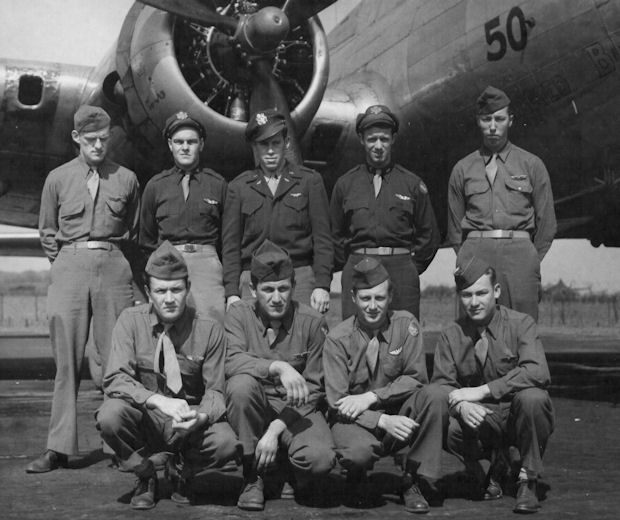
427th BS 2Lt Malcolm F. Damon Crew. 2Lt Howard Burr is back row, center.
So, many weeks after leaving the U.S., this single B-17 crew and plane landed in the midlands of England. The navigator thought, "What an ordeal for a chance to be killed!"
That thought turned into near reality on a mission to bomb the Skoda Works in Pilsen, Czechoslovakia, when the faithful B-17 took too much punishment in the target area. After slowly losing three of its four engines, it crash landed near the Belgian border.
The crew, with one slightly injured, jumped from the plane as it stopped, heading for a safe distance in the event of an explosion. None came. The crew returned to destroy possible useful equipment and data and pick up a few personal items. They started the long walk back home.
Light snow was falling as they trudged along the country road. A distant truck motor forced them to jump into the roadside ditch. It was a German truck and as it passed there was a shout from the ditch. In seconds, the crew was scrambling into the stolen truck, now occupied by another U.S. Air Force crew that had been shot down. Soon they were sharing two dozen bottles of champagne that cold, late afternoon as the U.S. crewman truck driver raced to the west. At the entrance to a small village the fan broke and the engine overheated, and the truck was abandoned. The crews separated, going their own hopeful ways.
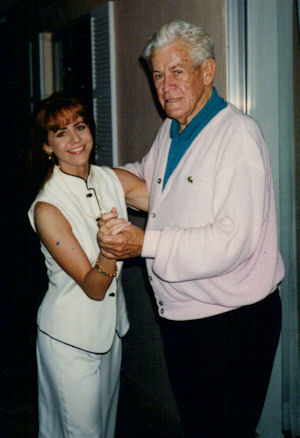 |
Despite cautions, one of the crew's athletic types swung too hard and the ball disappeared over the wall with the resulting noise of broken glass. Minutes later, an irate citizen conveyed in limited English that he was going to sue the U.S. Army for breaking the only window left intact in his bombed out town. It was time to move on.
A few days later, in what appeared to be a totally deserted village, they decided to spread out from the center to check for food and drink. 2Lt Burr rounded the corner of a walled courtyard at a small half-destroyed hotel.
He was shocked to hear a guttural "Hello" from a German officer sitting at a table alone, but with a bottle of wine. The navigator unconsciously returned the "Hello" as he was beckoned to sit down. Both sat with pistols at their sides, wearing flying clothes. He soon learned that the German officer had been shot down and was trying to get home.
After another bottle of wine, (there were cases in the hotel basement) and exchanges of stories about the war and home, Burr had to take his leave from this friendly competitor. He wished he spoke German as well as the fighter pilot spoke English. In closing, he mused aloud as to how they were now vowing to seek each other out, ‘when it's over' and why they may have been shooting at each other the day before.
The German's answer became indelible in the navigator's brain: "But I did not know you then!"
Helped by the German, the navigator carried bottles from the basement and into the street, returning more than an hour later to his empty-handed crew with his story he was sure they doubted.
That dark, blacked-out early evening, the crew discussed walking into Brussels. They decided they would rather take that chance than freeze outside. The sound of music emanated from a below-street lounge. They descended the stairs into the unknown.
The unknown was a sizeable island type bar surrounded by German officers. The Damon Crew, so obvious in flying clothes, walked to the bar and ordered drinks for the entire bar group from the barmaid. She automatically poured them and took their U.S. currency. That indelible phrase, "But I did not know you then" forced some quick conversation, and several hours later after drink exchanges these ‘little men' far removed from the top brass, wondered aloud what both sides were doing there.
Taking their leave, the U.S. crew climbed the stairs to the darkened street and were quickly contacted by a civilian who led then to an overnight stop. At dawn, they were on the outside of town on a grassy strip. Within minutes there appeared a B-17, which they boarded. It was totally stripped of everything except what was necessary to keep it flying. It passed over the English Channel at several hundred feet, continuing at treetop level to a base about fifty miles from the crew's home field.
A truck ride ended with the crew "home at last" feeling like heroes. Entering the base Commander's office, things returned to normal quickly when the C.O. turned and said quietly and with a slight smile, "Where have you been?"
![]()
26 November 1943
Bremen, Germany
The 303rd BG(H) Lead Group had 17 aircraft plus two PFF B-17s, and the 303rd BG(H) High Group had 18 aircraft. One aircraft aborted, #42-29524 Meat Hound 359BS (Campbell). The mission was the largest 8th Air Force effort to date with 633 aircraft dispatched. Fighter support was furnished by six Groups of P-47s and one Group of P-38s.
Enemy attacks were moderate, the number seen estimated at about 50. These were mostly FW-190s, ME-109s and ME-110s with a few JU-87s also reported. Two claims were made for aircraft destroyed. Sgt. Royal F. Plante in Flak Wolf claimed an FW-190 destroyed and Sgt. Martin G. Stachowiak in Dark Horse claimed an ME-110 as destroyed. Flak was reported as meager to moderate. Heavy cloud cover prevented observation of the bombing results.
General Travis made several comments about conduct on the mission. He reported that VHF radio discipline was the worst he had experienced. Some crew members apparently thought they were on interphone while on VHF. The lead ship's VHF was blocked by aircraft in the formation at times when it was badly required. He also was critical of the formation breaking up far too early for safety. The low temperature, minus 68 degrees, was one of the reasons. The break-up was at the Frisian Island, soon after P-47s came into view.
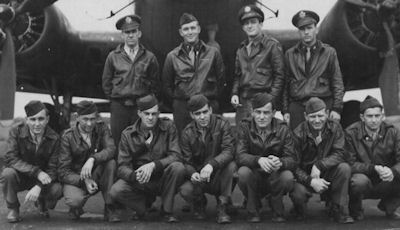
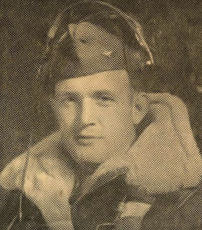
Capt Addell A. Cote Crew — 1Lt John W. Hull
Mr. Five by Five, #42-29955, 427BS, piloted by Capt. Addell A. Cote, was last seen ten kilometers west of Texel Island over the North Sea when it dropped out of formation with its wheels down. It apparently was under control at 10,000 feet. No parachutes were observed. The aircraft crashed at Den Helder, The Netherlands.
Lt. Cote, 2Lt. Clarence C. Bixler, 1Lt. Wilbur R. Barnhill, 1Lt. John W. Hull, T/Sgt. John R. Arter, T/Sgt. Vaughan Reaves, S/Sgt. Cecil M. May, S/Sgt. Theodore Gomes, S/Sgt. John M. Micek, and S/Sgt. Paul Gunsauls were all killed in the crash. Lt. Hull's body washed up on Terschelling Island, Holland on 13 February, 1944, and is buried in The Netherlands American Cemetery, at Margraten. The other nine bodies were never recovered. Their names are listed on the Walls of Missing, some at Margraten and others at Cambridge.
1Lt John W. Hull was the Bombardier on the 427th Cote Crew. His grave at The Netherlands American Cemetery at Margraten was adopted by Pieter Schlebaum. Several times a year Pieter visits 1Lt Hull's grave to honor him and those who gave their lives for freedom. The photo of Lt Hull was provided by the Hull family and Pieter Schlebaum.
John W. Hull was the older brother of 1Lt Robert L. Hull, a B-17 pilot in the 392nd Bomb Group. Robert was killed just 5 weeks after John in a B-17 crash.
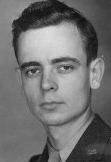 |
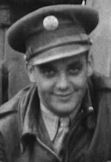 |
2Lt. Lloyd S. Johnson, PFF navigator on B-17 #42-3484, was mortally wounded and died on 2 December 1943. He is buried at Cambridge, England. Six other aircraft had nine gunners who required hospitalization with severe frostbite. Eight were waist gunners.
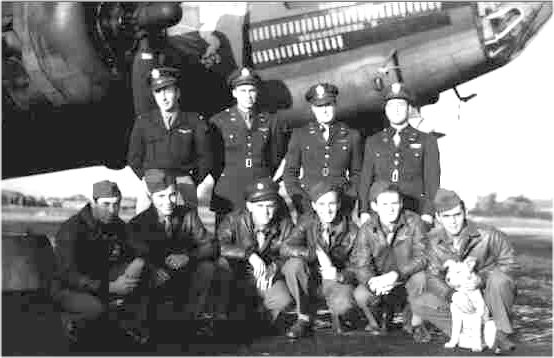
WILLIAM C. FORT, JR. CREW - 358th BS
(Back L-R) 1Lt Calder L. Wise (Instructor Pilot), 2Lt William C. Fort, Jr. (P), 2Lt John P.D. Nothstein (N), 2Lt Charles W. Spencer (B) (Front L-R) T/Sgt Grover C. Mullins (E), S/Sgt James H. Pleasant (WG), S/Sgt Howard N. Zeitner (BT), S/Sgt Bernard J. Sutton (TG), T/Sgt James C. Supple (R), S/Sgt John G. Viszneki (WG)
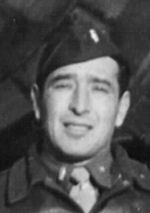 |
The bombardier, 2Lt. Charles W. Spencer, was cut on the face by broken glass, his helmet and oxygen mask were torn away, and he lay gasping for breath as frigid winds whipped about his unprotected face and head. The top turret gunner and engineer, S/Sgt. Grover C. Mullins, attempted to salvo the bombs to no avail. He entered the nose to check the damage and found Lt. Spencer bleeding and frozen. He dragged him into the passage beneath the pilot's compartment and tried to give him oxygen.
"His face was so swollen, I could hardly see his nose," said Sgt. Mullins.
Sgt. Mullins then assisted the co-pilot, 2Lt. McDonald L. Riddick, whose oxygen mask had been shot away by giving him a walk-around bottle. He also assisted the pilot, 2Lt. William C. Fort, with his oxygen mask and attempted to thaw out his frozen hands. In the meantime, Lt. Spencer, barely conscious, realized that the enemy fighters were still attacking and struggled to get back to his nose guns. He exposed himself to the extreme cold blast through the nose and faced the possibility of being thrown out by evasive action. He remained at his guns until the attacks ceased. After landing, he was unconscious beneath his guns.
Arriving back in England, Lt. Fort, his frostbitten hands so stiff he could barely manipulate the throttles, made an emergency landing at Docking-Fort. As he landed, another engine ran out of gas and went dead.
The waist gunner, S/Sgt. James H. Pleasant, was slightly injured and was hospitalized. S/Sgt. J.G. Viszneki, left waist gunner, and Sgt. H.H. Zeitner, ball turret gunner, were treated for frostbite and exposure at the local base hospital.
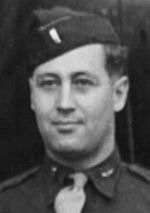 |
Sgt. Mullins was awarded the Silver Star medal and was later injured when he bailed out on the Oschersleben mission. Star Dust was repaired and returned to the 303rd BG(H).
Gen. Travis was enthusiastic about the mission. "I thought it was a damn good mission," he said. "Of course, we were over the clouds and couldn't see where we were supposed to be. The flak was about the roughest I have ever seen. They were right on our level and there was plenty of it. My ship was pretty well peppered with it." One fighter attempted to ram Gen. Travis’ B-17, but the quick work of Pilot Capt. Jacob C. James averted a collision.
1Lt. Fred W. Tucker, pilot of the Fortress Flak Wolf, finished his 25th mission and thought that the trip was rough. "They didn't waste any time today," he said. "They just climbed up, peeled off, and came in. A 20 mm shell hit our prop, but it kept running, even if it was a bit rough. It was the roughest one for me because I passed out once when my oxygen froze and got my hands frostbitten, too."
T/Sgt. George Keesling, engineer on Knockout Dropper said, "It was the coldest I've ever seen it. The flak was thick and quite a few fighters got through to worry us for a while."
Sgt. Edward Ruppel, ball turret gunner on Hell's Angels, reported new tactics by enemy fighters. "They tried to hide in the vapor trails left by the Forts and sneak up without being seen," he said. "I saw three or four of them try this, but it didn't seem to work too well. The gunners drove them off as soon as they came out into the open."
Lt. Charles J. McClain, 358BS bombardier, was awarded the Silver Star Medal. Sixteen aircraft sustained battle damage, five major and eleven minor, fifteen by flak, three by fighter and two by friendly aircraft.
© Sedalia Democrat, Sedalia, MO November 22, 2010
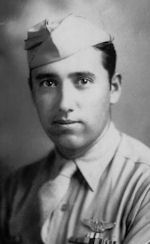
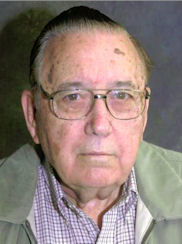 Grover C. Mullins, of Windsor, was awarded a certificate on Saturday from the Missouri State Society of the Daughters of the American Revolution for being October’s Patriot of the Month.
Grover C. Mullins, of Windsor, was awarded a certificate on Saturday from the Missouri State Society of the Daughters of the American Revolution for being October’s Patriot of the Month.
He was born July 31, 1920, in Houstonia. At the age of 17, he moved to Windsor, where he still resides today. To aid his country during World War II, he joined the Army Air Force when he was 22. From June 1942 to October 1945, Tech. Sgt. Mullins was assigned to the 303rd Bomb Group, 358th Bomb Squadron. He arrived at the Eighth Air Force base in England in August 1943.
His eighth mission was on Nov. 26, 1943. It was a wintery day, 67 degrees below zero, when the nose section of his aircraft was shot off. For his gallant service to save the airplane and the lives of the remaining crew, he was awarded the Silver Star, the nation’s third highest award.
His citation, in part, reads, “During the bombing run, his aircraft was subjected to fierce frontal attacks by enemy fighters. A cannon shell shattered the Plexiglas nose of the plane, killing the navigator, seriously wounding the bombardier and knocking out the oxygen supply lines on the right side of the aircraft.
Sgt. Mullins quickly removed the wounded bombardier from the nose compartment after administering first aid to him, secured emergency supplies of oxygen for his comrades who were without oxygen and furnished them with additional ammunition. Having accomplished this, he released the bomb load, then made his way to the cockpit.
Upon finding the co-pilot unconscious, he revived him, thus enabling him to assist the pilot in handling the crippled bomber. In addition to performing these self-assigned tasks, Sgt. Mullins found time to man his guns and assist in warding off repeated attacks. Mullins said this was one of his worst missions.
On his 13th mission on Jan. 11, 1944, he and his crew were shot down and taken prisoners by German forces. He was 23. He spent the next 16 months in Stalag-XVII-B, Krems, Austria. Between 20,000 to 30,000 Americans, Italian, Russian, French and English soldiers were in the camp, which had no heat during the winter. Breakfast consisted of black bread, which was brought into camp in a wagon pulled by a team of horses.
The Germans would take a loaf and cut off 2 inch square pieces for each prisoner. Mullins said it was hard and tasted like a piece of wood. The noon meal was watered soup and there was no evening meal. Water ran for only 30 minutes each day from randomly placed spouts throughout the camp.
Prisoners were deloused in hot showers once a month. Toilets were outdoor privies. Each barrack held 300 to 400 soldiers with eight people per bed. The beds were double in length, double in height and placed only four feet apart.
Prisoners of war received a Red Cross care package once a month, minus cigarettes and sugar, which the Germans had removed. The prisoners were allowed to mail one postcard to their family each month. During his confinement, his family received very few pieces of V-mail. Three feet deep trenches were dug around the camp. Both Axis and Allied forces bombed the prison, however the Allied forces did not do it intentionally.
In March 1945, Mullins went on the last “death march.” He and his fellow soldiers were liberated in France on May 3, 1945. They were taken to the nearest seaport, where they set sail for home and arrived two weeks later.
His medals include the Presidential Unit Citation, Good Conduct Medal, Legion of Merit, American campaign, Air Medal, Prisoner of War Medal, World War II Victory Medal, Purple Heart and the Silver Star.
Mullins and his wife, Joan, have two sons and three grandchildren. He is the owner and operator of an appliance store. He is a life member of the American Legion, American Veterans, Disabled American Veterans, Veterans of Foreign Wars, Purple Heart Association and American Ex-prisoner of War organizations. He also is a member of the Moose Lodge, Odd Fellows Lodge, Stalag 17B and charter member of both the National World War II Museum in New Orleans and the World War II Memorial in Washington, D.C.
He is proud to be honored on brick walks at the World War II Museum in New Orleans, the Clinton Square in Clinton and the Windsor Museum.
![]()
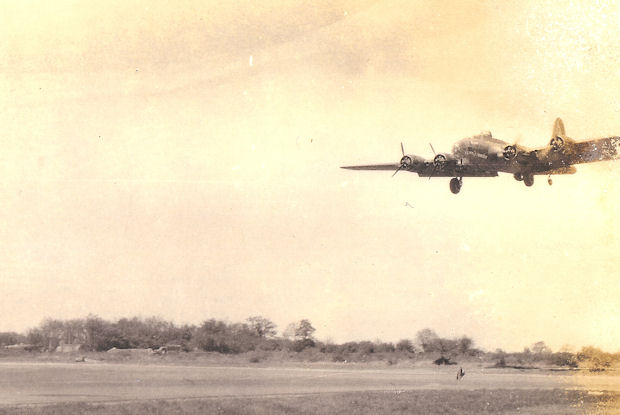
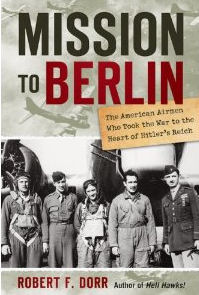 Mission to Berlin: The American Airmen Who Struck the Heart of Hitler's Reich
Mission to Berlin: The American Airmen Who Struck the Heart of Hitler's ReichA new book by Robert F. Dorr
On February 3, 1945, the Eighth Air Force sent 1,003 B-17 Flying Fortresses to Berlin and 434 B-24 Liberators to Magdeburg, escorted by 904 P-51 Mustangs and 42 P-47 Thunderbolts. It was the second largest mission of the war, with the Berlin portion being the war's largest mission directed to a single target. It was the first time American bombardiers were given an aiming point in a city center. It was the first time P-47s reached Berlin.
With help from 303rd veterans and others, Robert F. Dorr's book "Mission to Berlin" is being published in March. The book is a powerful narrative of bomber crews at war. "Mission to Berlin" can be ordered on-line, at stores, or directly from the author: Robert F. Dorr, 3411 Valewood Drive, Oakton VA 22124, robert.f.dorr@cox.net, (703) 264-8950.
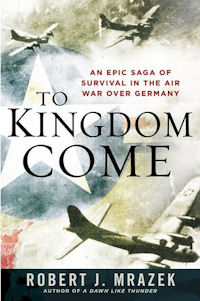 To Kingdom Come: An Epic Saga of Survival in the Air War Over Germany
To Kingdom Come: An Epic Saga of Survival in the Air War Over Germany
A new book by Robert J. Mrazek
On the morning of September 6, 1943, 338 B-17 “Flying Fortresses” of the American Eighth Air Force took off from England, bound for Stuttgart, Germany, where their mission was to bomb Nazi weapons factories. It was the largest force ever assembled against a single target in the war.
The British argued that conducting daylight bombing raids against heavily defended German military targets without long-range fighter escort would lead to crippling and unsustainable losses.
They were right.
Dense cloud cover obscured the industrial targets, and one commander’s critical decision to circle three times over the city—and its deadly flak—proved disastrous for the airborne crews. Forty-five planes went down that day, with hundreds of men lost or missing.
Not a single bomb fell on its intended target. The Stuttgart mission would become a defining moment in the conduct of the air war over Germany—one that underscored the courage and sacrifice of American flyers in the face of incredible odds.
Drawing on declassified documents, confidential diaries, and internal interviews of the top commanders—and focusing on gripping firstperson accounts of six of the B-17 airmen— award-winning author Robert J. Mrazek vividly re-creates the incredibly fierce air battle above Stuttgart and reveals the often astonishing valor of the airmen who survived being shot down— and the tragic fate of those who did not.
To Kingdom Come takes an in depth look at B/Gen Robert F. Travis, Commanding General of the 41st Combat Wing. Those interviewed for the book include the 303rd Bomb Group's Bud Klint, Bill Eisenhart and Don Stoulil, who flew the lead plane with General Travis on a mission to Berlin in 1944.
![]()
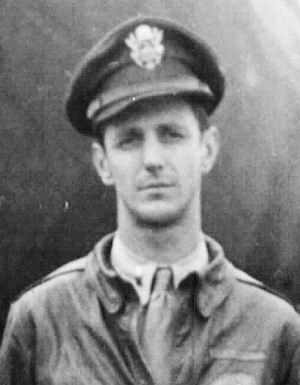
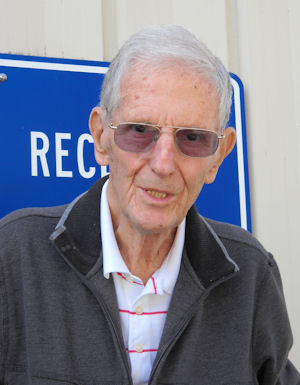
As one of the first replacements for the original crewmen, Abbott flew his 25 missions as bombardier with several pilots and lead crews from March 1943 to August 1943.
Still doing well, Abbott regularly visits the West Virginia Veteran's Home in Barboursville, bringing them magazines and reading material. The "Magazine Man" is always a welcome sight to the residents and staff.
![]()
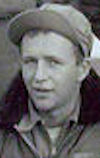 Harvey N. Kaber, 88, passed away on Dec. 13, 2010, in Anaconda.
Harvey was born in 1922 in Everland, S.D., to Walter and Ellen Kaber.
Harvey N. Kaber, 88, passed away on Dec. 13, 2010, in Anaconda.
Harvey was born in 1922 in Everland, S.D., to Walter and Ellen Kaber.
The family moved to Whitefish in 1935. From 1938 to 1946 he served in the Army and was in the Hell’s Angels 303rd Bomb Group in World War II.
He married Esther Fern Brown on Jan. 6, 1950. Harvey retired from BN Railroad in 1984. He enjoyed fishing, hunting, cooking and having beers with his friends.
He was preceded in death by his wife, “Fern,” and son, Larry. He is survived by his daughters, Bette Bear and husband, Ray of Kalispell, Rita Holcomb and husband, Robert of Bigfork; sons, Bruce and wife, Debbie of Anaconda, Claude and wife, Debbie of Whitefish; daughter, Karen Benda and husband, Jeff of Whitefish; brother, Larry Kaber and wife, Charlotte of Kalispell; and many grandchildren and great-grandchildren who loved and will miss him very much.
We will be having a celebration of life for Harvey at 2 p.m. Monday, Dec. 27 at the VFW in Whitefish. The public is invited.
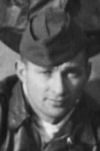 Steve Dulick, 93, of Venice, formerly of Youngstown, Ohio died Dec. 19, 2010.
Visitation will be held from 6 to 8 p.m. Wednesday at Kays-Ponger & Uselton Funeral Home, Venice Chapel. A celebration of his life will be held at 11 a.m. Thursday at Kays-Ponger& Uselton Funeral Home, Venice Chapel Burial will follow at Sarasota National Cemetery.
Steve Dulick, 93, of Venice, formerly of Youngstown, Ohio died Dec. 19, 2010.
Visitation will be held from 6 to 8 p.m. Wednesday at Kays-Ponger & Uselton Funeral Home, Venice Chapel. A celebration of his life will be held at 11 a.m. Thursday at Kays-Ponger& Uselton Funeral Home, Venice Chapel Burial will follow at Sarasota National Cemetery.
He leaves behind his wife of 69 years, Louise; sons, Paul (Pat); Nick and Glenn (Dianne); daughters, Linda (John) and Susan; sister, Rose; grandsons, Matthew, Nathan, Justin and Joshua; granddaughter, Danielle; and step-grandchildren, Nichole, Angela and Jessica.
He was born Dec. 26, 1916 in Youngstown, Ohio. On June 5, 1941, he married Louise Theresa in Youngstown, Ohio.
He served in the United States 8th Air Force during WWII as a member of the 303rd Bomb Group. He successfully flew 30 missions over Europe and was awarded the Distinguished Flying Cross and Three Oak Leaf Clusters air medals.
Steve retired from 3 C Highway after 32 years and moved to Venice in 1980. He was a member of Epiphany Cathedral Church, Venice. In lieu of flowers, donations can be made to The Loveland Center, 157 S. Havana Road, Venice, FL 34292.
William I. Kever (Oct. 9, 1918 - Dec. 13, 2010) was born in Ft. Wayne, IN. He was on his own by age 15 and supported himself through high school to become the first of his family to graduate. Bill enlisted in the US Army Air Corps on Dec. 8, 1941 and was stationed at Molesworth Air Base in England as an armorer with the 303rd Bomb Gr. He met his future wife, Honor Martin, while on leave in Northampton. They started their life together in Boise, ID in 1947.
Bill began working for the Veterans Admin. in Boise as a file clerk and retired as Chief Medical Admin. at the USVA Outpatient Clinic in Manila, Philippines. They moved from Boise to Salt Lake to Louisville to the Philippines to Cleveland to San Antonio and back to the Philippines. While overseas they traveled extensively. He and Honor retired to an active social life in San Antonio. Many road trips and trips to England and Canada followed.
Bill loved volunteering in the "Back 40" at the Inst. of Texas Cultures for 23 yrs., playing golf and (like his mother Elizabeth Myers) was a life-long fan of the Chicago Cubs. He was generous and sociable and enjoyed "The Recycled Teenagers" coffee group, Thurs. lunches with old friends, lunches with "The Ladies" and shooting the breeze with friends on Alan Hale and later at The Meadows.
His wife Honor died in 1999. He is survived by their daughter Honor, son-in-law David Carpenter, grandson William Rogers, all in Canada, sister-in-law Joyce Martin in England, brother-in-law John Ananias in Indiana. He will be interred at Ft. Sam Houston with his wife. A memorial service will be held on Jan.6, 2 pm at The Meadows, 730 Babcock Rd. The family is grateful to staff and physicians at Morningside Ministries, Vitas Hospice Care, Methodist Hospitals and St. Luke's Hospital for the excellent care and companionship he received.
 Ray E. Derr, 90, of 941 E. First St., Nescopeck, concluded his journey in this life at 4:15 a.m. Tuesday, Nov. 30, 2010, in Berwick Retirement Village I.
Ray E. Derr, 90, of 941 E. First St., Nescopeck, concluded his journey in this life at 4:15 a.m. Tuesday, Nov. 30, 2010, in Berwick Retirement Village I.
Born in Nescopeck on Aug. 26, 1920, a son of the late Roy and Emma Kishbaugh Derr, he graduated from the former Nescopeck High School in 1938. He served in the U.S. Air Force in World War II for four years with the famed Hell's Angels, B-17 Bomber Squadron, 8th Air Force, 303rd Bomb Group in England. Following Air Force service, he was employed with AC&F Industries, Berwick, until it closed. He then transferred to its Milton plant, retiring as an accountant in 1982, after 42 years of employment.
He was a member of Wesley United Methodist Church, Nescopeck, and a life member of Nescopeck Volunteer Fire Co. He loved taking care of his yard and traveling.
Preceding him in death were a brother, Eugene A. "Gene" Derr, Dec. 23, 2009; half brother, Harry Hunsinger; and son-in-law, David L. Seely, Aug. 23, 1993.
Ray will be remembered by his wife, the former Dora Denn, married 61 years on March 26, 2010; two daughters: Dianna Seely, Nescopeck; Karen Steward and husband, Jerry, Berwick; three grandchildren: Jeffrey Seely and wife, Ann Marie; Jennifer Seely; Shannon Schnerr and husband, Larry; three great-grandchildren: Carson and Andersen Seely; Averi Schnerr; four sisters and one brother: Mary Alice Schmidt and Ida Mae Sitler, both of Berwick; Patricia Karchner and husband, Ray, Zenith; Donna Kacyon and husband, Larry, Towanda; and David Derr, Berwick.
"Forever in our hearts."
Entrusted to the care of the Heller Funeral Home, Nescopeck, where services will be held on Friday at 11 a.m. with the Rev. Rodney Miller, his pastor, presiding. He will be laid to rest in Pine Grove Cemetery, Walnut Street, Berwick. Calling hours are 9:30-11 a.m. Friday. Expressions of sympathy may be made to McBride Memorial Library, 500 Market St., Berwick, PA 18603.
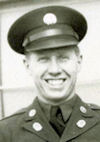 Jerome “Jerry” O. Lund, 88, of Nokomis, Fla., passed away Saturday, Nov. 20, 2010.
Jerry was born Aug. 24, 1922, in Spring Grove, Minn., to Edwin and Gertrude Lund. He was married to Mary Van Beek on Sept. 13, 1947, and lived in Appleton, Green Bay and Kiel, Wis., until 1972. He worked for A&P Stores, then operated a grocery store in Kiel, Wis. He loved his golf and gardening and was very much loved by his family and friends.
Jerome “Jerry” O. Lund, 88, of Nokomis, Fla., passed away Saturday, Nov. 20, 2010.
Jerry was born Aug. 24, 1922, in Spring Grove, Minn., to Edwin and Gertrude Lund. He was married to Mary Van Beek on Sept. 13, 1947, and lived in Appleton, Green Bay and Kiel, Wis., until 1972. He worked for A&P Stores, then operated a grocery store in Kiel, Wis. He loved his golf and gardening and was very much loved by his family and friends.
Jerry was the second oldest of 13. He served with the United States Army Air Forces during World War II. He was proud of his service as a Mess Sergeant in the 303rd Bomb Group. He was a member of Epiphany Cathedral and worked for both Dominic Clouthier and Paul Martineau as a carpenter.
Services will be at 12:30 p.m. Wednesday at Epiphany Cathedral. Ewing Funeral Home is in charge of arrangements. Survivors include his wife of 63 years, Mary; brothers John of Branson, Mo., and Jim of Appleton, Wis.; And numerous nieces and nephews.
Leo E. Jeambey, 85, Our Lord and Savior, Jesus Christ, welcomed His faithful servant, Leo, to His heavenly Kingdom Thursday, April 30, 2009. Pastor Leo was born 8-07-23 in Dewitt, Neb., to the Rev. Edward and Clara (Graham) Jeambey. His family moved to Mt. Pleasant, Iowa, where he graduated from high school in 1940.
Leo was the radio operator on the 360th John A. Matheson Crew, shot down on 28 September 1944. Five were killed in action. Leo and three others spent the rest of the war as POWs.
Leo's "Celebration of Life" service will be at 1:30 p.m. Friday (5/8/09) at Southern Heights Presbyterian Church, 40th and Old Cheney Rd. Visitation will begin at 2 p.m. Tuesday (5/5/09) with family visitation from 6:30 - 8 p.m. Thursday (5/7/09) at Butherus, Maser, and Love, 40th and A Street, Lincoln. Memorials may be made to Southern Heights Presbyterian Church; Hickman Presbyterian Church; or the People's City Mission, Lincoln.
![]()
Dear Gary,Keeping the Legacy Alive,
Thank you for the article. I only wish my dad were alive and could see all the news articles that you have sent. He would be saying as Bob Hope, "thanks for the memories." I know a lot of time goes into to all of this. Thank you for all your hard work and your patriotism.
Best regards, Teresa Bumgarner
"An early Christmas gift"
Mr. Moncur,
I wanted to express my thanks to you for putting me on the receipt list for "The Molesworth Pilot" as I had always enjoyed reading the copies of the old "Hell's Angels Newsletter" that Dad used to receive. He and Mom never did get connected to the digital world (Touch-tone phones were about as advanced as they ever got!) and I was unaware of your efforts to continue publication in an online format so the latest publication arrived as an unexpected "early Christmas present."My sister Edith will print it out (she has a photo quality printer) and she and I will read it to Dad over the holidays while he looks at all the wonderful photos. He will pay particular interest to the photo of General Travis as he used to regale us with the story of somehow ending up being escorted along with the General in his jeep for a "social visit" to a local pub each time we'd pass the sign for Travis Air Field along Hwy 80 when we were young.
Again my thanks to you for all your effort in getting this wonderful publication out to me (And Dad!) Respectfully,
James D. Taylor
Proud son of Captain James B. Taylor
Gary,
Thank you for including me for receiving "The Molesworth Pilot". I am truly enjoying the honor these brave men receive and, also, Hearing the stories of their brave efforts and sacrifices in the name of freedom. Since my first visit to the Mighty Eighth Air Force Museum in October, I have written to each remaining crew member from our list. It has been less than a month since I wrote them. As I hear from them I will let you know. This is an amazing experience for me.
Thank you again, Mike Fowler

|